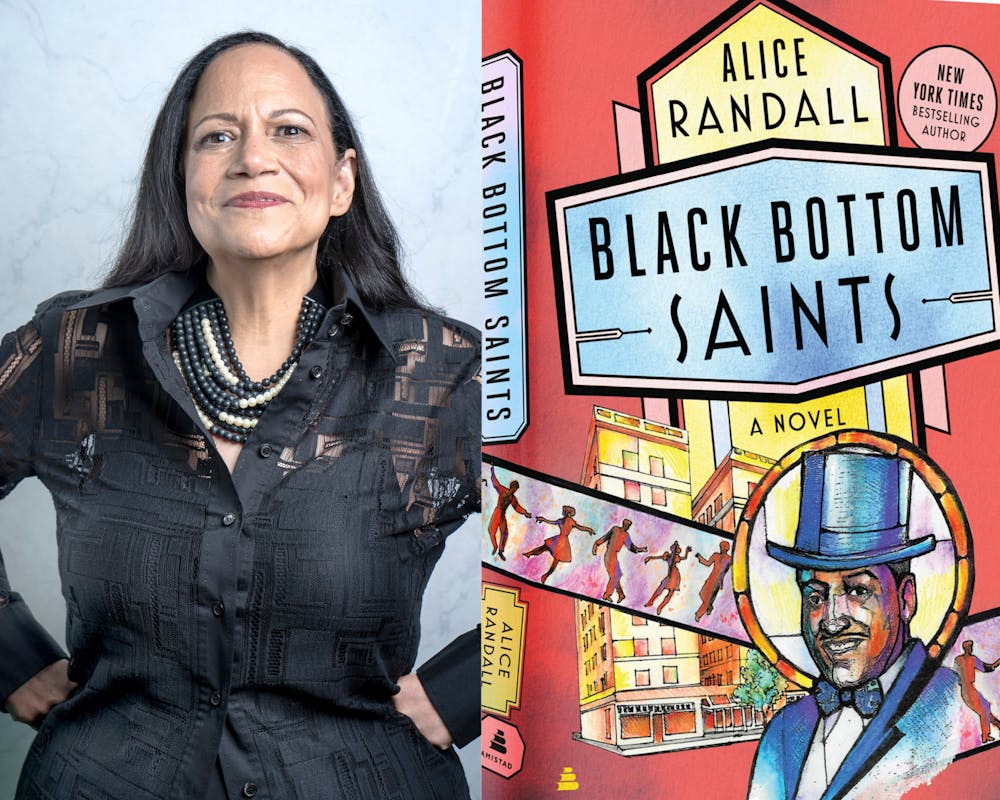Alice Randall — New York Times best-selling novelist, award-winning songwriter and faculty member at Vanderbilt University — spoke over Zoom about her most recent novel, “Black Bottom Saints,” to approximately 40 members of the University community Monday. Randall’s speech marked the end of Black History Month as well as the first day of Women’s History Month.
Michael Gerard Mason, associate dean of African American Affairs and director of the Luther Porter Jackson Black Cultural Center, introduced Randall to the audience. Mason described “Black Bottom Saints” as an ode to Randall’s inside world and the people who carried her from her beginnings in Detroit to here.
The novel was chosen by the Office of African-American Affairs to be the premise for its Black History Month celebrations, and Randall gave several talks on the novel throughout February. Each day of the month was dedicated to a different saint and song from the Black Bottom Saints playlist, which celebrates music from Detroit’s Black Bottom neighborhood for which the novel was named.
“Black Bottom Saints” chronicles Black Bottom, Detroit through the stories of 61 Black figures as told from the perspective of Joseph “Ziggy” Johnson, who was a real-life dance teacher, emcee and columnist in mid-20th century Michigan. The novel is structured like a Catholic Saints’ Day book, but Randall noted it is centered on the virtues of secular saints.
Before beginning her discussion of the novel, Randall dedicated her presentation to Sally Hemings, an enslaved person owned by Thomas Jefferson and mother to several of his children. She later explained this choice by reminding the audience that trauma is woven into America’s founding, as 41 of the 56 signers of the Declaration of Independence owned enslaved workers. Randall then listed the names of the 26 saints who self-identify as female and said she hopes every person on the Zoom knows what it means to declare that the roots of Black Girl Magic run straight to Black Bottom, Detroit.
“The wisdom of Black Bottom is for every woman and every person,” Randall said.
Randall discussed the importance of women in her novel, using examples such as renowned Black singers Della Reese and Dinah Washington but also lesser-known women that she curated through her own research. She noted the characters’ strength is in their variations and diversity, and there is no one way to be a woman, especially a Black woman.
“Some of these saints are straight, some queer, most born girls and assigned the label girl at birth, at least one assigned the label boy at birth, but bloomed into vibrant womanhood, and others know themselves to be gender non-conforming from A to Z,” Randall said.
Randall described Detroit as a “city of Black girls” in 1959 — the year she was born. According to the 1960 federal census, she said, there were 39,679 Black girls under the age of five years old living in Detroit. It had the largest number of Black girls of any city.
With support from Vanderbilt University, Randall was the first to bring together all of the data she found in the census. Additionally, she used ancestry.com to find personal stories that became public stories.
After Ziggy’s death in the novel, a character named “Colored Girl” becomes the narrator of the story. Randall said her specific intent was to convey the experiences of Black girls.
“My father taught me as a Black woman I had a right to narrate all the stories, and Black girls’ voices could be central,” Randall said. “We could talk about the men, the women, the children and the gender undefined.”
Randall touched on tying together the end of Black History Month with the beginning of Women’s History Month in the liminal space between the two.
“I am claiming … this book centers the experience of girls and women of color — specifically Black girls or women — in our understanding of what America isn’t, hasn’t been and might could be,” Randall said.
Playing cards featuring illustrations of the Black Bottom Saints will be released soon. Randall said she thinks the card decks will be great for kids because a user-friendly version of the stories of the saints can be told to them, as some of the novel’s material is difficult.





